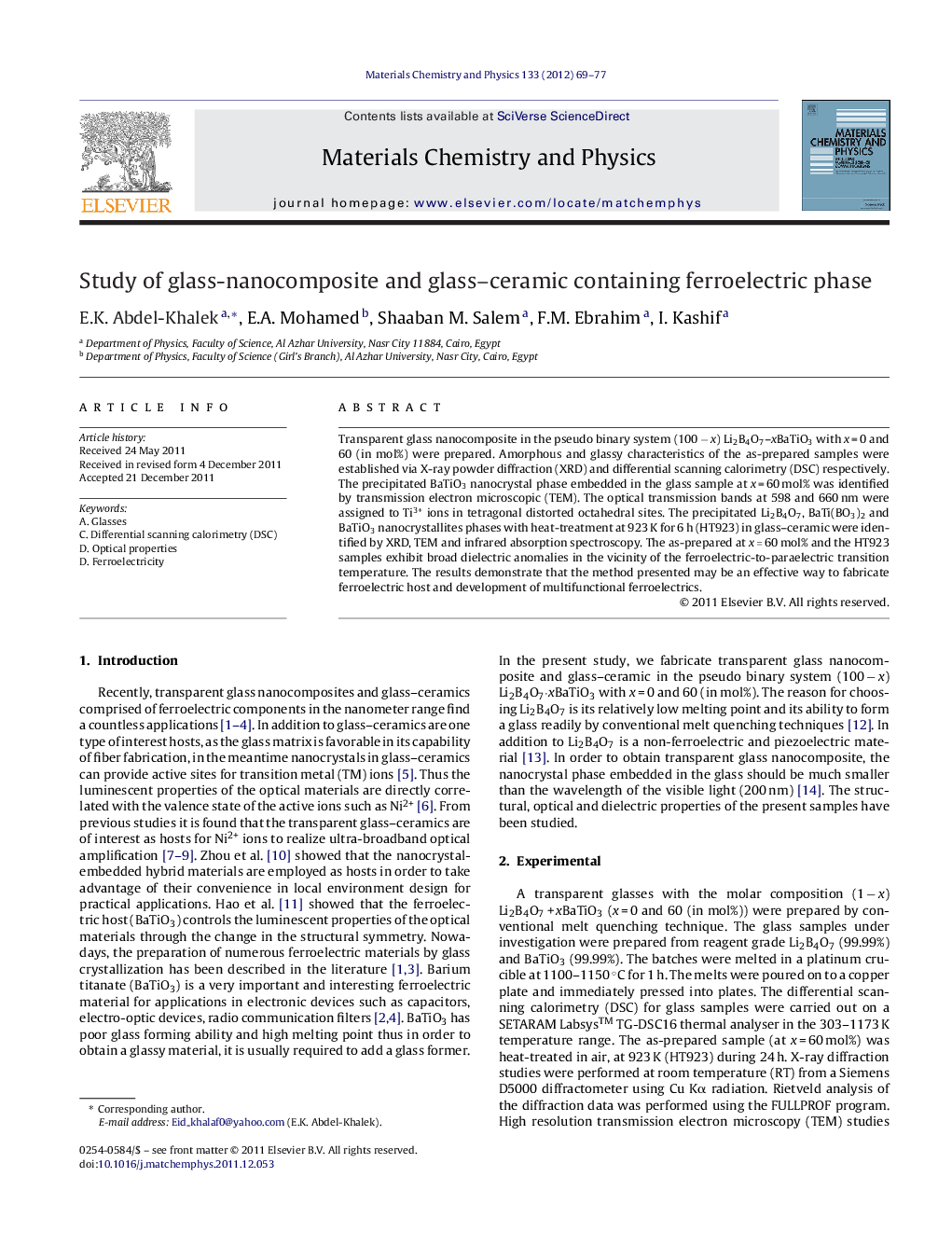| Article ID | Journal | Published Year | Pages | File Type |
|---|---|---|---|---|
| 1524178 | Materials Chemistry and Physics | 2012 | 9 Pages |
Transparent glass nanocomposite in the pseudo binary system (100 − x) Li2B4O7–xBaTiO3 with x = 0 and 60 (in mol%) were prepared. Amorphous and glassy characteristics of the as-prepared samples were established via X-ray powder diffraction (XRD) and differential scanning calorimetry (DSC) respectively. The precipitated BaTiO3 nanocrystal phase embedded in the glass sample at x = 60 mol% was identified by transmission electron microscopic (TEM). The optical transmission bands at 598 and 660 nm were assigned to Ti3+ ions in tetragonal distorted octahedral sites. The precipitated Li2B4O7, BaTi(BO3)2 and BaTiO3 nanocrystallites phases with heat-treatment at 923 K for 6 h (HT923) in glass–ceramic were identified by XRD, TEM and infrared absorption spectroscopy. The as-prepared at x = 60 mol% and the HT923 samples exhibit broad dielectric anomalies in the vicinity of the ferroelectric-to-paraelectric transition temperature. The results demonstrate that the method presented may be an effective way to fabricate ferroelectric host and development of multifunctional ferroelectrics.
► Glass nanocomposites was synthesized. ► Glass nanocomposites exhibit both optical transmission bands at 598 and 660 nm and broad dielectric anomalies. ► The ferroelectricity in pure single-phase oxide glass has not yet been discovered.
